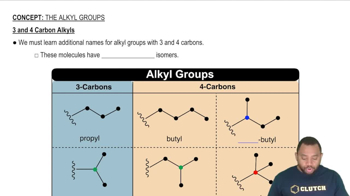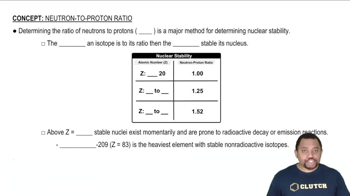Textbook Question
A radioactive sample contains 1.55 g of an isotope with a halflife of 3.8 days. What mass of the isotope remains after 5.5 days?

 Verified step by step guidance
Verified step by step guidance


A radioactive sample contains 1.55 g of an isotope with a halflife of 3.8 days. What mass of the isotope remains after 5.5 days?
A sample of F-18 has an initial decay rate of 1.5⨉105/s. How long will it take for the decay rate to fall to 2.5⨉103/s? (F-18 has a half-life of 1.83 hours.)
A mammoth skeleton has a carbon-14 decay rate of 0.48 disintegration per minute per gram of carbon (0.48 dis/min • g C). When did the mammoth live? (Assume that living organisms have a carbon-14 decay rate of 15.3 dis/min • g C and that carbon- 14 has a half-life of 5715 yr.)